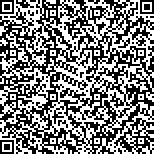下载中心
优秀审稿专家
优秀论文
相关链接
摘要

为识别InSAR干涉图噪声的类型,从而更有效地进行干涉图处理,提出一种基于小波变换的干涉图噪声类型识别方法。该方法结合小波变换和对数变换算法,从能量和分布特征两个角度,对经小波变换后的InSAR干涉图小波系数的特点进行分析。首先研究低频子带小波系数在对数变换前后的能量分布特点,以此识别干涉图的噪声类型,然后在此基础上利用高频子带系数估计噪声的大小。分析结果显示,干涉图中的噪声为加性噪声,且干涉图高频系数呈高斯正态分布,其噪声大小可用尺度1上的HH子带系数估计。这些结果对在小波域内进行InSAR干涉图噪声的分析与处理具有一定指导意义。
To identify the type of noise in an Interferometric Syntheic Aperture Radar (InSAR) interferogram and facilitate more effective data processing, especially for interferogram filtering based on wavelet transform, we developed a novel method for identifying the noise type and estimating the noise level. This method combines wavelet transform with logarithmic transformation and includes an in-depth analysis of the characteristics of interferogram wavelet coefficients from the viewpoints of energy distribution and statistical interpretation. First, we investigated the energy distribution characteristics of low-frequency subband wavelet coefficients before and after the logarithmic transformation to identify the noise type of the interferogram. On this basis, the noise level could be estimated using high-frequency subband wavelet coefficients. From the analysis results of this study, we conclude that the noise type of the InSAR interferogram is additive noise, the high-frequency coefficients show a Gaussian distribution, and the noise level can be estimated by a high-frequency subband on one scale. These results provide further scope for noise analysis and processing of InSAR interferograms based on wavelet transform.

